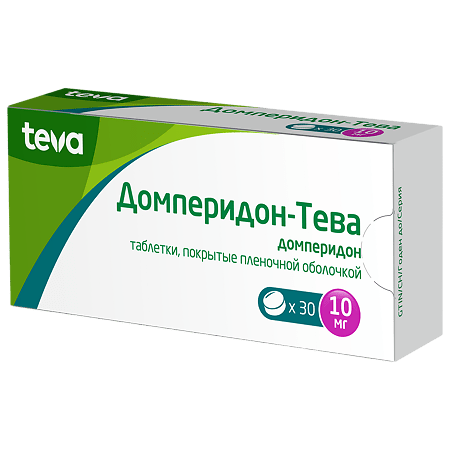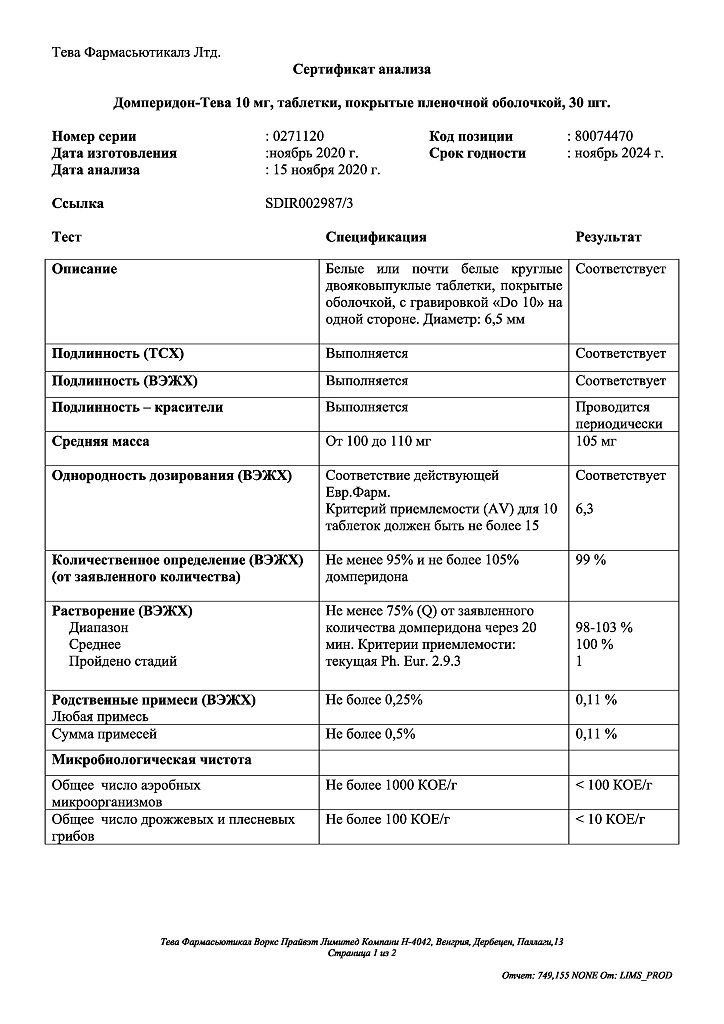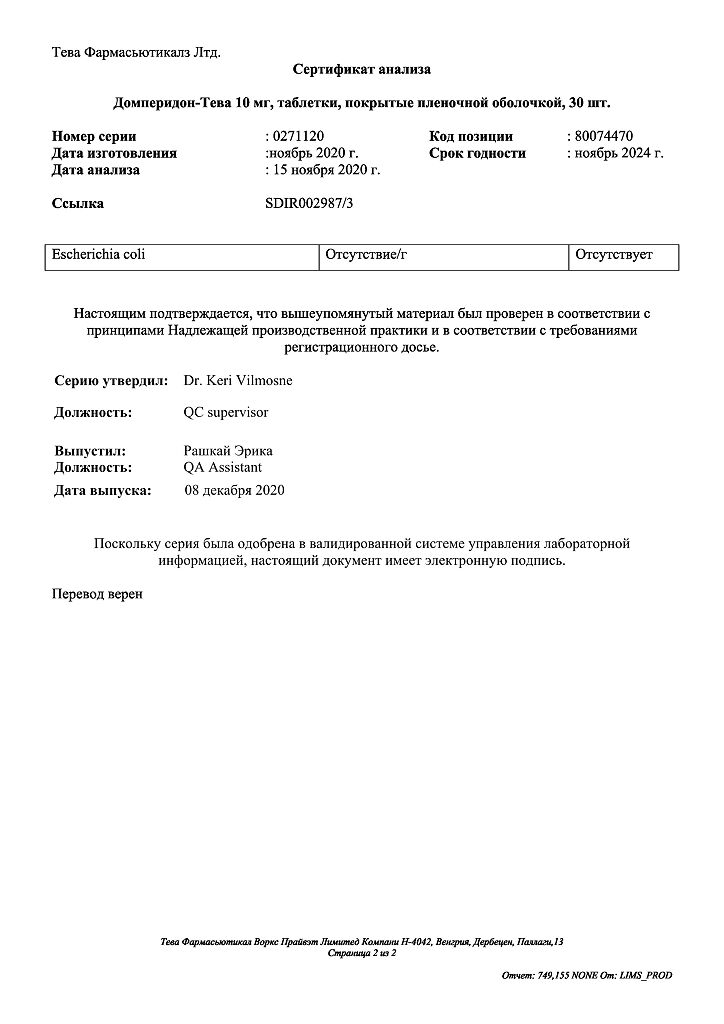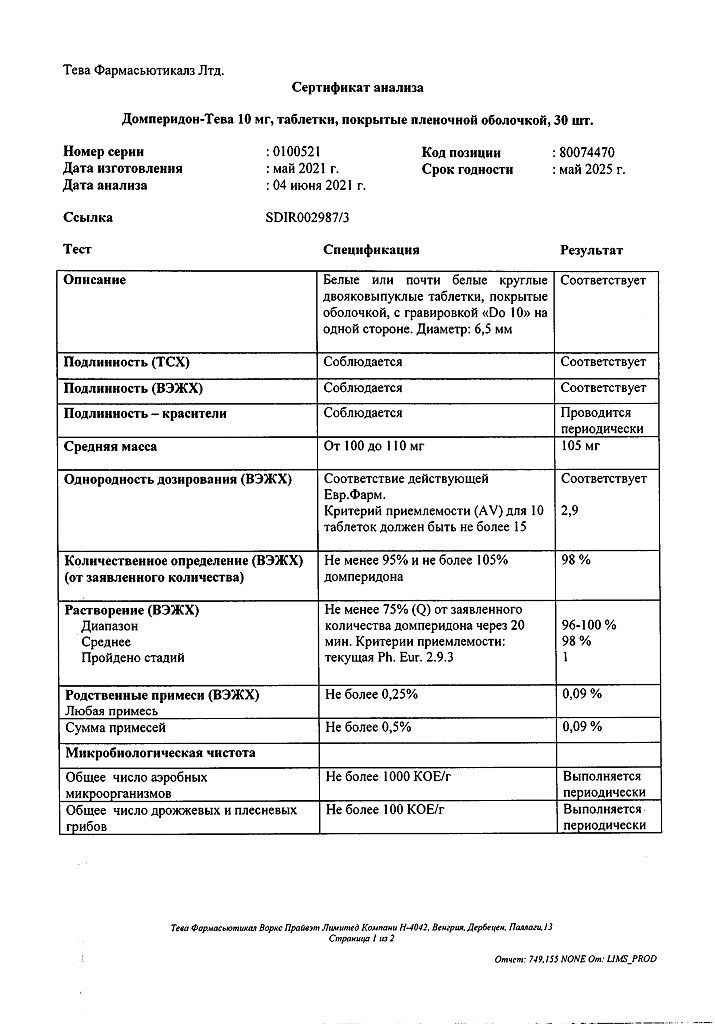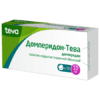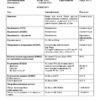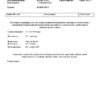No products in the cart.
Domperidone-Teva, 10 mg 30 pcs
€9.13 €7.99
Description
Pharmacotherapeutic group: antipyretic drug – dopamine receptor blocker central
ATX code: A03FA03
Pharmacological properties
Pharmacodynamics
Domperidone is a dopamine receptor blocker with antiemetic effects. The antiemetic action is due to a combination of peripheral (gastrokinetic) action and inhibition of dopamine receptors in the trigger zone of brain chemoreceptors located outside the blood-brain barrier in the area postrema. When administered orally, domperidone increases decreased esophageal pressure, improves antroduodenal motility and accelerates gastric emptying without affecting gastric secretion. Domperidone increases prolactin secretion in the pituitary gland.
Pharmacokinetics
When taken orally on an empty stomach, domperidone is rapidly absorbed, its maximum plasma concentrations are reached within 30-60 min. Low absolute bioavailability after oral administration (about 15%) is due to the effect of “first passage” through the liver. Although in healthy volunteers the bioavailability of domperidone increases when taken after meal, patients with gastrointestinal complaints should take domperidone 15-30 min before meal. When gastric acidity decreases, impaired absorption of domperidone is observed. Pre-taking cimetidine and sodium bicarbonate reduces the bioavailability of domperidone. When administered orally after a meal, a slightly longer time is required to achieve maximum absorption.
When administered orally domperidone does not cumulate and does not induce its own metabolism. Domperidone is 91-93% bound to plasma proteins. Domperidone is distributed in various tissues of the body, is found in breast milk, but does not penetrate through the blood-brain barrier. The concentration of domperidone in breast milk is 10-50% of the concentration in blood plasma.
The metabolism of domperidone occurs in the liver and in the intestinal wall by hydroxylation and N-dealkylation with participation of CYP3A4, CYP1A2 and CYP2E1 isoenzymes.
Domperidone is excreted by the intestine (66%) and the kidneys (33%), including unchanged (10% and 1% respectively). The elimination half-life is 7-9 hours.
Pharmacokinetics in special groups of patients
In patients with serum creatinine concentration more than 0.6 mmol/l the half-life is from 7.4 to 20.8 hours, with decreased plasma concentration of domperidone.
Indications
Indications
To relieve symptoms of nausea and vomiting.
Pharmacological effect
Pharmacological effect
Pharmacotherapeutic group: antiemetic – dopamine receptor blocker central
ATX code: A03FA03
Pharmacological properties
Pharmacodynamics
Domperidone is a selective D2-dopamine receptor antagonist with antiemetic properties. Domperidone does not penetrate the blood-brain barrier well. The use of domperidone is rarely accompanied by extrapyramidal side effects, especially in adults, but domperidone stimulates the release of prolactin from the pituitary gland.
Its antiemetic effect may be due to a combination of peripheral (gastrokinetic) action and antagonism of dopamine receptors at the chemoreceptor trigger zone, which is located outside the blood-brain barrier. Animal studies and low concentrations of the drug detected in the brain indicate a predominantly peripheral effect of domperidone on dopamine receptors.
When taken orally, domperidone increases the duration of antral and duodenal contractions, accelerates gastric emptying and increases sphincter pressure in the lower esophagus. Domperidone has no effect on gastric secretion.
Pharmacokinetics
Absorption
When taken on an empty stomach, domperidone is rapidly absorbed when taken orally, with maximum plasma concentrations (Cmax) achieved within 30-60 minutes. The low absolute bioavailability of domperidone when taken orally (approximately 15%) is associated with intensive first-pass metabolism in the intestinal wall and liver.
Domperidone should be taken 15-30 minutes before meals. Reduced acidity in the stomach leads to poor absorption of domperidone. Oral bioavailability is reduced by prior administration of cimetidine and sodium bicarbonate. When taking domperidone after food, it takes longer to achieve maximum absorption and the area under the concentration-time curve (AUC) is slightly increased.
When taken orally, domperidone does not accumulate and does not induce its own metabolism; Cmax in blood plasma – 21 ng/ml 90 minutes after 2 weeks of taking the drug orally at a dose of 30 mg per day was almost the same as the concentration – 18 ng/ml after taking the first dose.
Distribution
Domperidone is 91-93% bound to plasma proteins. Distribution studies of radiolabeled domperidone in animals have shown a wide tissue distribution but low concentrations in the brain. Small amounts of domperidone cross the placenta in rats.
Metabolism
Domperidone undergoes rapid and extensive metabolism by hydroxylation and N-dealkylation. In vitro metabolism studies with diagnostic inhibitors have shown that CYP3A4 is the major cytochrome P450 form involved in the N-dealkylation of domperidone, while CYP3A4, CYP1A2 and CYP2E1 are involved in the aromatic hydroxylation of domperidone.
Elimination
Excretion by the kidneys and intestines is 31% and 66% of the oral dose, respectively. The proportion of domperidone excreted unchanged is small (10% is excreted by the intestines and about 1% by the kidneys).
The plasma half-life (T1/2) after a single oral dose is 7-9 hours in healthy volunteers, but is increased in patients with severe renal impairment. In these patients (serum creatinine >6 mg/100 mL, i.e. >0.6 mmol/L), the half-life of domperidone is increased from 7.4 to 20.8 hours, but plasma domperidone concentrations are lower than in patients with normal renal function.
A small amount of unchanged domperidone (about 1%) is excreted by the kidneys.
Special patient groups
In patients with moderate hepatic impairment (Child-Pugh score 7-9), the AUC and Cmax of domperidone were 2.9 and 1.5 times higher than in healthy volunteers, respectively. The proportion of unbound fraction increased by 25%, and the half-life increased from 15 to 23 hours. Patients with mild hepatic impairment had slightly reduced systemic drug levels compared to healthy volunteers based on Cmax and AUC, with no changes in protein binding or half-life. The pharmacokinetics of domperidone in patients with severe hepatic impairment has not been studied.
Special instructions
Special instructions
Domperidone-Teva contains lactose and should not be used in patients with lactose intolerance, galactosemia, or impaired absorption of glucose or galactose.
Since only a very small amount of domperidone is excreted unchanged by the kidneys, single dose adjustment is unlikely to be necessary in patients with renal failure. When repeated use, the dosing frequency should be reduced to 1-2 times a day depending on the severity of the deficiency, and a dose reduction may also be required. During long-term therapy, such patients should be monitored regularly.
Taking the drug after meals slows down its absorption.
When using domperidone, prolongation of the QT interval on the electrocardiogram is possible. During post-marketing surveillance of patients receiving domperidone, there have been reports of very rare cases of QT prolongation and torsade de pointes (TdP). These reports included information about patients with underlying risk factors, electrolyte imbalances, and concomitant therapies that may contribute to adverse events.
Epidemiological studies have demonstrated that domperidone use was associated with an increased risk of serious ventricular arrhythmias or sudden coronary death.
The highest risk was observed in patients over 60 years of age, patients receiving domperidone in daily doses exceeding 30 mg, and in patients concurrently taking drugs that prolong the QT interval or CYP3A4 inhibitors.
Domperidone-Teva is contraindicated for use in patients with a history of prolonged cardiac conduction intervals, especially the QTc interval, in patients with severe electrolyte imbalances (hypokalemia, hyperkalemia, hypomagnesemia) or bradycardia, or in patients with concomitant cardiac diseases, such as chronic heart failure, due to an increased risk of developing ventricular arrhythmias. Electrolyte imbalances (hypokalemia, hyperkalemia, hypomagnesemia) or bradycardia are known to increase proarrhythmogenic risk.
Domperidone is contraindicated when co-administered with drugs that prolong the QT interval, with the exception of apomorphine. Use together with apomorphine is possible only if the benefits of combined use of domperidone with apomorphine outweigh the risks, and only if the recommended precautions for combined use of drugs mentioned in the instructions for medical use of apomorphine are strictly followed.
Treatment with Domperidone-Teva should be discontinued if signs and symptoms that may be associated with cardiac arrhythmia occur, and patients should consult their physician.
Patients should be advised to immediately report any cardiac abnormalities to their physician.
Domperidone is not recommended for the prevention of nausea and vomiting after anesthesia; During long-term drug therapy, patients should be under regular medical supervision.
With simultaneous use, domperidone enhances the effect of antipsychotics. When used simultaneously with dopaminergic receptor agonists (bromocriptine, levodopa), domperidone inhibits the unwanted peripheral effects of the latter (such as digestive disorders, nausea, vomiting), without affecting their central effects.
Domperidone-Teva is recommended for use in adults and children in the minimum effective dose.
Impact on the ability to drive vehicles and machinery
When taking Domperidone-Teva, caution should be exercised when driving vehicles and engaging in other potentially hazardous activities that require increased concentration and speed of psychomotor reactions due to the possible risk of extrapyramidal disorders, convulsions, drowsiness, and headaches.
Active ingredient
Active ingredient
Domperidone
Composition
Composition
1 tablet contains:
active ingredient: domperidone (domperidone maleate) 10.0 (12.73) mg;
excipients: lactose monohydrate 50.00 mg, corn starch 10.00 mg, sodium lauryl sulfate 0.20 mg, povidone K30 3.00 mg, microcrystalline cellulose 23.32 mg, colloidal silicon dioxide 0.25 mg, magnesium stearate 0.50 mg;
shell (hypromellose 2.80 mg, propylene glycol 0.30 mg, talc 0.70 mg, titanium dioxide E171 1.20 mg).
Pregnancy
Pregnancy
Domperidone-Teva is contraindicated for use during pregnancy and breastfeeding.
There are limited post-marketing data on the use of domperidone in pregnant women.
An animal study demonstrated reproductive toxicity at high maternal dose levels. The possible risk to humans is unknown. Domperidone is excreted in the breast milk of lactating female rats (mainly as metabolites: maximum concentrations of 40 and 800 mg/ml after oral or intravenous administration of 2.5 mg/kg, respectively).
Domperidone is excreted in women’s breast milk, and breastfed infants may receive less than 0.1% of the maternal weight-adjusted dose. We cannot exclude the possibility of undesirable effects, especially cardiac ones, in infants during breastfeeding.
A decision must be made to stop breastfeeding or discontinue/abstain from domperidone therapy while assessing the benefits of breastfeeding
for the child and the benefits of treatment for the mother.
Caution is advised if there are risk factors for QTc prolongation in breastfeeding infants.
Contraindications
Contraindications
• Hypersensitivity to domperidone or any other component of the drug.
• Prolactin-secreting tumor of the pituitary gland (prolactinoma).
• Gastrointestinal bleeding.
• Perforation of the gastrointestinal tract.
• Mechanical obstruction of the intestine.
• Moderate to severe liver failure.
• In patients with prolongation of cardiac conduction intervals, especially the QTc interval, in patients with severe electrolyte imbalance or concomitant cardiac disease, such as chronic heart failure.
• Concomitant use of oral forms of ketoconazole, erythromycin or other potent inhibitors of the CYP3A4 isoenzyme that cause prolongation of the QT interval (such as fluconazole, clotrimazole, clarithromycin, amiodarone and telithromycin, itraconazole, posaconazole, ritonavir, saquinavir, telaprevir and voriconazole) with the exception of apomorphine.
• Hereditary lactose intolerance, lactase deficiency or glucose-galactose malabsorption.
• Breastfeeding period.
• Pregnancy.
• Children under 12 years of age weighing less than 35 kg.
• Body weight less than 35 kg.
With caution
Kidney failure; simultaneous use of drugs that induce the development of bradycardia and hypokalemia, as well as macrolides that prolong the QT interval – azithromycin and roxithromycin, simultaneous use with apomorphine.
Side Effects
Side Effects
Summary of Adverse Reactions
Adverse reactions are systematized according to the World Health Organization (WHO) Classification: very common (≥1/10), common (≥1/100, but <1/10), uncommon (≥1/1000, but <1/100), rare (≥1/10000, but <1/1000), very rare (<1/10000), frequency unknown (cannot be determined based on the available data).
According to clinical studies
Mental disorders
Common: depression, anxiety, akathisia, asthenia.
Nervous system disorders
Common: headache, drowsiness.
Gastrointestinal disorders
Common: dry mouth, diarrhea.
Skin and subcutaneous tissue disorders
Common: rash, itching.
Uncommon: hypersensitivity, urticaria.
Disorders of the reproductive system and mammary glands
Often: decreased or absent libido, gynecomastia, pain and sensitivity in the mammary glands, galactorrhea, menstrual irregularities and amenorrhea, lactation disorders.
Uncommon: swelling and discharge from the mammary glands.
Based on spontaneous reports of adverse reactions
Immune system disorders
Very rare: anaphylactic reactions, including anaphylactic shock.
Mental disorders
Very rare: agitation (increased excitability), nervousness, irritability.
Nervous system disorders
Very rare: dizziness, extrapyramidal disorders, convulsions.
Heart disorders
Frequency unknown: ventricular arrhythmia*, torsade de pointes (TdP), sudden coronary death*.
Skin and subcutaneous tissue disorders
Very rare: angioedema (Quincke’s edema), urticaria.
Renal and urinary tract disorders
Very rare: urinary retention.
Influence on the results of laboratory and instrumental studies
Very rare: abnormalities in laboratory tests of liver function, increased blood prolactin concentrations.
* Some epidemiological studies have suggested that domperidone may be associated with an increased risk of serious ventricular arrhythmias and sudden death. The risk of these events is more likely in patients over 60 years of age and in patients taking the drug in a daily dose of more than 30 mg. It is recommended to use domperidone in the lowest effective dose in adults and children.
Interaction
Interaction
Anticholinergic drugs can neutralize the effect of Domperidone-Teva. The oral bioavailability of domperidone is reduced after previous administration of cimetidine or sodium bicarbonate. Antacids and antisecretory drugs should not be taken simultaneously with domperidone, as they reduce its bioavailability after oral administration.
Concomitant use with paracetamol and digoxin does not affect the concentration of these drugs in the blood.
The main route of metabolism of domperidone is through the CYP3A4 isoenzyme. The results of in vitro studies and accumulated clinical experience with domperidone indicate that concomitant use of drugs that significantly inhibit this isoenzyme may be accompanied by an increase in plasma concentrations of domperidone.
The combined use of domperidone with strong inhibitors of the CYP3A4 isoenzyme, which, according to data obtained, cause prolongation of the QT interval, is contraindicated.
Contraindicated combinations:
Drugs that prolong the QT interval:
Class IA antiarrhythmic drugs (eg, disopyramide, hydroquinidine, quinidine);
Class III antiarrhythmic drugs (eg, amiodarone, dofetilide, dronedarone, ibutilide, sotalol);
certain antipsychotic drugs (eg, haloperidol, pimozide, sertindole);
certain antidepressants (eg, citalopram, escitalopram);
certain antibiotics (erythromycin, levofloxacin, moxifloxacin, spiramycin);
certain antifungal drugs (eg, pentamidine);
certain antimalarials (especially halofantrine, lumefantrine);
certain gastrointestinal drugs (eg, cisapride, dolasetron, prucalopride);
certain antihistamines (eg, mechitazine, mizolastine);
certain anticancer drugs (eg, toremifene, vandetanib, vincamine);
certain other drugs (eg, bepridil, difemanil methylsulfate, methadone).
Strong CYP3A4 inhibitors:
protease inhibitors;
azole antifungals;
some macrolide antibiotics (erythromycin, clarithromycin and telithromycin).
Not recommended combinations:
calcium antagonists (diltiazem, verapamil);
some antibiotics from the macrolide group.
Combinations that should be taken with caution:
apomorphine*;
drugs that cause bradycardia and hypokalemia;
azithromycin, roxithromycin.
The above list of drugs is typical but not exhaustive.
* Domperidone is contraindicated when taken concomitantly with drugs that prolong the QT interval, with the exception of apomorphine. Use together with apomorphine is possible only if the benefits of combined use of domperidone with apomorphine outweigh the risks, and only if the recommended precautions for combined use of drugs are strictly followed.
Concomitant use with levodopa
When used together, an increase in the concentration of levodopa in the blood plasma (30-40%) may be observed; no dose adjustment is required.
Overdose
Overdose
Symptoms
Agitation, altered consciousness, convulsions, disorientation, drowsiness, extrapyramidal reactions. Symptoms of overdose occur most often in children.
Treatment
Treatment is symptomatic; there is no specific antidote. Includes gastric lavage, taking activated charcoal, and if extrapyramidal reactions occur, taking anticholinergic, antiparkinsonian drugs.
Due to the potential for QT prolongation, monitor the electrocardiogram (ECG).
Storage conditions
Storage conditions
Store at a temperature not exceeding 25 °C.
Keep out of the reach of children.
Shelf life
Shelf life
4 years.
Do not use after the expiration date stated on the package.
Manufacturer
Manufacturer
Teva Pharmaceutical Works Private Limited Company, Hungary
Additional information
| Shelf life | 4 years. Do not use after the expiration date stated on the package. |
|---|---|
| Conditions of storage | Store at the temperature not more than 25 °С. Keep out of reach of children. |
| Manufacturer | Teva Pharmaceutical Works Production Limited Company, Hungary |
| Medication form | pills |
| Brand | Teva Pharmaceutical Works Production Limited Company |
Related products
Buy Domperidone-Teva, 10 mg 30 pcs with delivery to USA, UK, Europe and over 120 other countries.

